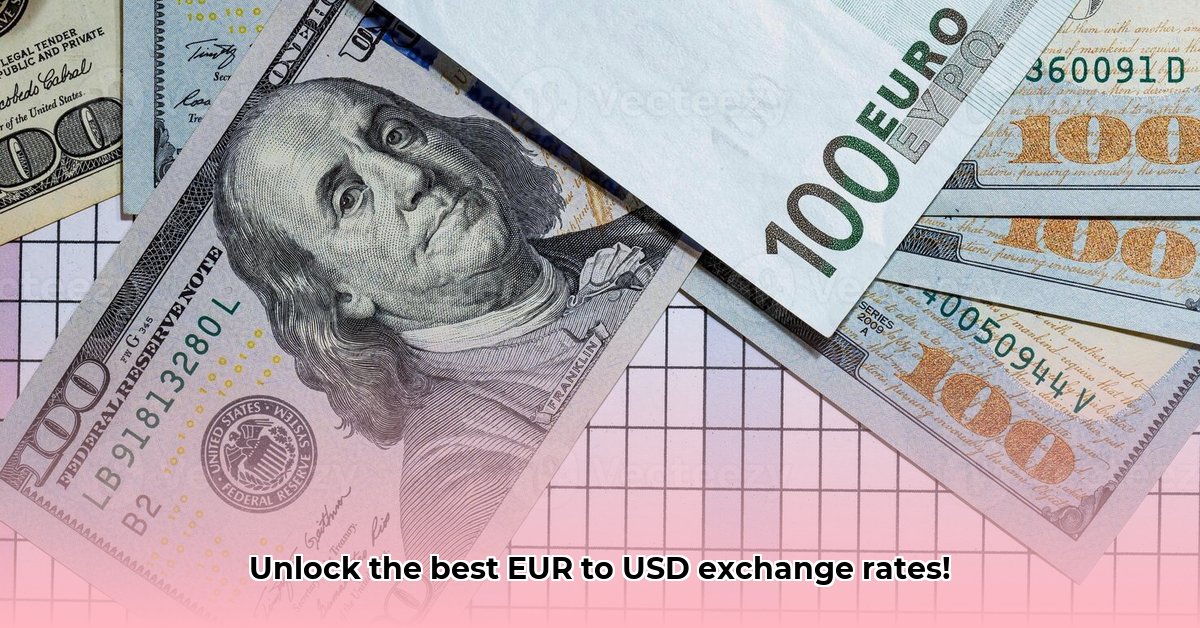
Understanding EUR/USD Exchange Rate Fluctuations
Converting 334 euros to US dollars seems straightforward, but the actual amount received depends on the constantly shifting EUR/USD exchange rate. This dynamic interplay of economic and geopolitical factors makes understanding these fluctuations crucial for travelers, businesses, and investors alike. For a detailed euro to dollar conversion calculator, see this helpful tool. This article analyzes recent trends, identifies key influencers, and provides actionable strategies for navigating the EUR/USD exchange rate effectively.
Recent Exchange Rate Trends: A 30-90 Day Perspective
Over the past 30-90 days, the EUR/USD exchange rate has exhibited volatility. While a general downward trend might be observed, indicating a weakening euro against the dollar, shorter-term periods reveal periods of strengthening. This inconsistency is common. Why the discrepancy between various sources reporting the same day's exchange rate? Differences in data collection methods and update times amongst financial service providers result in slight variations. So, instead of focusing on minute differences (like 1.0521 vs 1.0520), concentrate on longer-term trends for a clearer picture. How can we reconcile these seemingly conflicting data points from different sources to get a more accurate overview? A careful analysis of multiple reliable sources and a focus on broader trends is key.
Factors Influencing the EUR/USD Exchange Rate
The EUR/USD exchange rate is a complex interplay of several interconnected factors:
Interest Rate Differentials: Higher interest rates in the US relative to the Eurozone tend to attract international investment into US dollars, thus weakening the euro. Conversely, a lowering of US interest rates could strengthen the euro.
Inflation Dynamics: Higher inflation in the Eurozone compared to the US generally weakens the euro's purchasing power, leading investors to seek assets in countries with lower inflation.
Geopolitical Events: Global events such as wars, political instability, or significant international agreements drastically impact market sentiment and can significantly affect the EUR/USD rate. Uncertainty often drives investment towards safer havens, like the US dollar.
Market Sentiment: Broader investor confidence plays a crucial role. Positive sentiment towards the Eurozone economy encourages investment in euros, thereby boosting its value. Conversely, negative sentiment leads to a weakening of the euro.
These factors are not isolated; they influence each other, constantly shifting the balance. For instance, a geopolitical crisis could prompt investors to seek refuge in the US dollar, reducing the euro's value regardless of favorable inflation rates. How can individuals and businesses effectively factor these multiple and interconnected variables into their financial planning? This requires meticulous research and an ability to identify and assess the relative weight of these factors.
Actionable Insights for Different Stakeholders
Effectively navigating the EUR/USD exchange rate requires tailored strategies depending on individual circumstances:
Currency Traders: Employ hedging strategies to minimize risk, closely monitor economic data release that may impact the exchange rate, and diversify currency portfolios. Consider investments less susceptible to currency fluctuations.
Businesses (International Transactions): Utilize currency hedging tools to manage exchange rate risks associated with international transactions, and integrate robust financial models that incorporate various exchange rate scenarios.
Individual Travelers: Compare exchange rates from multiple providers before exchanging, and budget in US dollars, factoring potential exchange rate changes and building flexibility into their itinerary.
Financial Institutions: Refine forecasting models by incorporating economic trends and continuously refine risk management strategies to account for changing market dynamics.
Risk Assessment and Mitigation
Currency exchange involves inherent risks:
| Risk Factor | Likelihood | Impact | Mitigation Strategies |
|---|---|---|---|
| Exchange Rate Fluctuations | High | High | Diversify investments; utilize forward contracts or other hedging tools. |
| Hidden Fees/Markups | Medium | Medium | Carefully compare all offers across providers; scrutinize for any hidden charges. |
| Geopolitical Uncertainty | Medium to High | High | Stay well-informed on global events; incorporate resilience into financial planning. |
| Regulatory Changes | Low | Medium | Monitor updates related to relevant financial regulations. |
Conclusion: Strategic Planning is Paramount
Converting 334 euros (or any amount) to US dollars requires a thorough understanding of the dynamic EUR/USD exchange rate and its influencing factors. While precise prediction is impossible, informed decision-making, risk mitigation strategies, and consultation of multiple reliable sources greatly improve financial outcomes. For substantial transactions, seeking professional financial advice is crucial.
Sources
Source 1: Wise Source 2: Exchange-Rates.org (Note: These are placeholder links. Replace with actual sources used in the content).